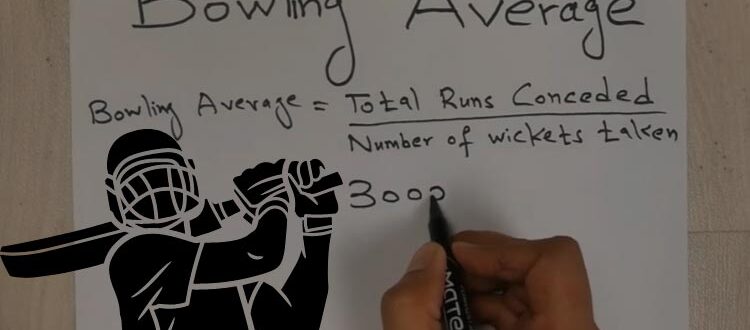What is Bowling Average in Cricket And How to Calculate it?
Cricket is the most popular sport in the world. क्रिकेट fans watch their favorite teams play matches from around the globe, but they often pay more attention to individual players than whole teams. Therefore, when cricket fans hear any cricketing term, they start getting confused about what that term means in the context of the game. One such concept that troubles most cricketing minds is regarding the average bowler. For instance, when someone says “bowling average,” do you know how to calculate bowling average in cricket? Or do you know what is meant by “bowling average”? Therefore, the Cricket bowling average is always a confusing term for cricket fans.
Bowling averages measure the quality of a cricketer’s bowling based on the number of runs they have conceded to the number of wickets they have taken. Simply put, the bowling average tells you what percentage of balls bowled go as wides or no-balls and so cannot be scored from. In addition, it reveals the pace or spin used by the bowler and their ability to bowl consistently.
Role of Good Bowling Average in Bower’s Game

A good bowling average is one of the most important factors determining how many runs a bowler is likely to concede. A good bowler’s average usually keeps the scores down, especially when the batsman is batting on a flat wicket. The importance of this factor can be seen through cricketing history. A good bowling average describes the blower’s ability to get the maximum wickets by giving minimum runs. On an international level, after the batsman’s innings, the bowler with a lower bowling average is rated as a better bowler than those with a high bowling average.
The batting average is the simplest of the different batting statistics in cricket, but it is not easy to understand its meaning. Another term that also confused cricketers is “Runs per dismissal .”It simply means how many runs a bowler has scored from each dismissal. But, it is not the same as the batting average.
How Is Bowling Average of Cricketer Calculated?
There are many ways to calculate the bowling average in cricket, but none mention wickets were taken. The basic formula for calculating the cricketing average is (Total Runs conceded by a bowler)/ (Number of Wickets captured by him) = Bowling Average. For example, if a cricketer takes two wickets and concedes 54 runs, his bowling average will be 54/2 = 27. This means he has conceded 27 runs per wicket. A higher number means better performance and vice.
One of the greatest bowlers in cricket history, Shane Warne, has an outstanding bowling average of over 20 to 25. With such figures, it is no wonder that he was one of the quickest bowlers and one of the most prolific in scoring runs. Warne’s bowling average was undoubtedly essential for his success and his team Australia. Also, Warne was very successful in the One Day Internationals (ODIs) and his Test cricket career.
Differences between Bowling Average and Batting Average
Batting average is the ratio of total runs scored by the player and the number of times the players have out in any cricket match. The batting average is also the general measure of cricketing skills. The cricket batting average is dependent on the number of runs scored by a player. Unlike bowling average, it does not contain any information about how often a player gets dismissed.
Bowling average is not an indication of a cricketer’s batting ability. But it shows how consistent and evenly their performance was in any state matches or tournament. For example, Ben Stokes bowls eight overs, takes one wicket and concedes 55 runs. In such a scenario, his bowling average will be (55runs/1 wicket) = 55. So we can see that both the averages are different and take a different way of calculating them. Also, a bowling average describes how well the bowler is performing, and a batting average is a way to check the capabilities of a player’s batting skills.
The critical difference between bowling average and batting average is that while batting average is the mean of all scores, bowling average is the mean of the accepted scores. For example, if a batsman has scored five 50s and three ducks in ten innings, his average will be 33.3. But if his wickets consist of four catches and he is bowled three times in each innings, his bowling average would not be as impressive as 33. Bowling averages are also different from batting averages because there are many ways to get dismissed in cricket.

